There’s something awe-inspiring and graceful about watching a dog show. Every pup, regardless of size, prances alongside their handler in perfect step. They don’t pull, there’s no lunging, and it looks majestic. You can’t help but admire the picture. And then you look at your canine: the whirling dervish. Clearly, something got lost in translation. But you’ve seen other dogs in the neighborhood walking on their leashes. Maybe they don’t have the same polished gaits, but they also don’t turn into furry tornadoes. If you’d like to join the calm dog-walking crew, we have the tricks of the trade. Leash training isn’t as complicated as it seems. And as long as you have plenty of patience (and treats), we can get you out there, walking proudly.
Leash Safety
Not all dogs learn leash training as puppies. If your dog’s never left the boundaries of the backyard, what’s the point? They know the fence is their territory, and they’re going to stay there. And different states (or even different cities) have varying laws regarding leashes. This means owners may have never encountered a need to worry about leash training. It’s not a bad thing (or a good thing).
However, knowing that your dog is safely anchored to you conveys relief. When you’re in a public space, it only takes a moment for your dog to lose focus on YOU and slip away. And there are PLENTY of hazards out there waiting to injure a canine. That tether can mean the difference between a happy, healthy hound and a hefty vet bill.
Show and sport dogs receive leash training from a young age. So we lucked out. Our Greyhound came ready to go from the moment we met her. It surprised us how well she walked at our sides, especially as we were strangers. But it was a skill she knew and recognized. If you have a new puppy or an older dog who’s never experienced walking on a leash, you’ll need to put in some work.
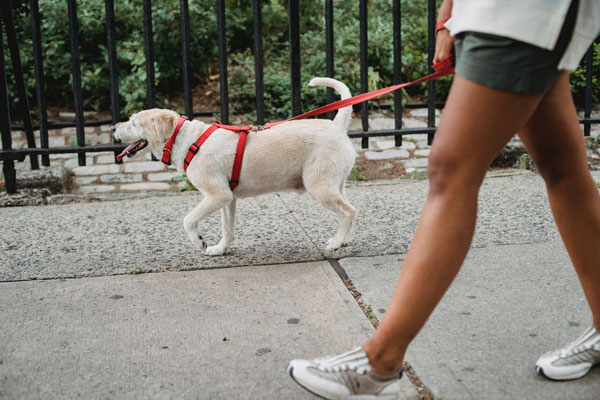
Leash Training
When you have a dog that walks at your side on a leash, you feel confident. Your dog also stays safe from potential accidents. Instead of trying to unwrap yourself from the leash as your dog does laps around you (never get a lead THAT long) and losing track of what’s going on, you remain focused. This means you can take note of potential distractions (squirrels – it’s always squirrels), steer away from triggers that might upset your pup, and avoid sudden problems. After all, not everyone outside in the public realm is paying attention. Distracted drivers affect pedestrians ALL the time.
At the vet’s office, your dog will remain at your side. (Maybe not quietly – there’s no promise of that) You won’t have to chase them around. And in crowded situations, such as the airport, you’ll reassure your pup that you’re close and they’re safe.
Maybe a leash seems like a thin piece of material, but it’s incredibly strong when you start to think of everything it’s capable of.
Leash Training: Materials
When you’re ready to start the leash-training process, you need to get a few things ready:
- A collar or harness
- Your leash of choice
- Training treats
- A clicker (Optional)
- Patience
As with any kind of training, you want to keep sessions relatively short: between 15-20 minutes. If you stretch things out too long, you’ll exhaust your pup (even if they’re older). Plus, they’ll start to get bored and lose focus. Short, engaging sessions keep dogs excited and eager to learn.
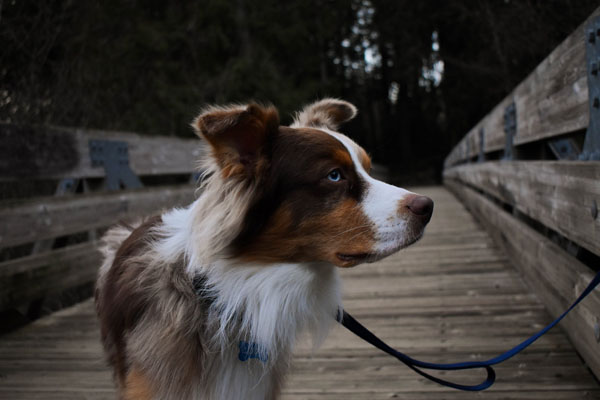
Leash Training: Prep Work
Before you start introducing commands, you have to get your dog used to the presence of the leash. The best way to do this is to place their collar or harness on and attach the leash. Hopefully, you’ve already given them time to adjust to that harness. If not, start there, so you’re not introducing two accessories at the same time. A leash has weight to it, and it feels different. Following the usual training time, let your dog walk with it dragging behind them. (Make sure you’re supervising, so it doesn’t catch on anything) Use an upbeat voice and provide treats, so there’s a positive association with the leash.
You’re letting them know that long piece of nylon won’t hurt them. It’s a positive time filled with happy comments and food. It’ll make the remainder of the leash-training process flow easier.
You also need to decide on the cue you plan to use. Are you going to go with a clicker? Or do you want to use a vocal cue? Whichever you decide, it needs to remain consistent. You can’t switch halfway through. And everyone in the house needs to use the same cue to avoid confusion. Popular vocal cues include “Come” and “Let’s go!”
Finally, decide which side of your body is the most comfortable for your dog to walk on. The left is traditional, but that may not work for you. You can practice holding an empty leash and find which is the most comfortable. Don’t skip this, either – you’ll need it when you start.
Leash Training: Inside
Your dog’s comfortable with the leash, you have a cue, and you know which side you want your dog to walk on. Great! Now the real leash-training work starts. You DON’T want to venture outside yet, though. Start indoors where you have the fewest distractions. There’s plenty of time to head outdoors once you and your dog have the hang of things. For now, work in a large room with cleared space.
- Put your dog into their collar/harness and leash.
- Give your cue. As soon as your dog looks at you, provide a treat. (This establishes the cue)
- Repeat until your dog comes to you on cue.
- The next time you give the cue, back up several steps. Your dog should come to you to get the treat. Give the treat on the side you want your dog to walk on.
- Repeat until your dog walks several steps on that side. (This should happen since that’s where the treats come from)
- Pick up the leash, holding it in your OPPOSITE hand. You’ll form a loose “smile” shape.
- Take a step, then give your dog a treat when they also take a step.
- Repeat until your dog is consistently following your steps.
- Next time, take two steps before you offer a treat.
- Continue adding steps until you can walk the length of the room before offering a treat. (This is why you need a LARGE room)
- Start making random turns. Always give treats when your dog stays with you.
You are gradually working your dog through the process of loose-leash walking. This is the most common leash-training method people use. And your dog is going to learn, “Hey, as I stay by this leg, I get food!” It DOES take time and patience, but your pup will catch on.
Leash Training: Outside
Once your dog’s mastered the living room (or whichever room you were using), it’s time to venture outdoors. NOT into the general public just yet, though. But you need some distractions to test their resolve. The backyard is your best bet. You’ll have squirrels, the sounds of neighbors and cars, and plenty of smells. And DISTRACTION is what leash-training is designed to keep in check.
- Put your dog into their collar/harness and leash. And pick up your end of the leash.
- Give your cue and start walking. Have some patience, as it may take a moment for your dog to follow.
- As soon as your dog catches on, provide a treat.
- Follow your previous leash training of providing a treat every couple of steps.
- If you feel resistance due to your dog stopping to investigate something, STOP and repeat your cue. NEVER pull on the leash. As soon as your pup begins walking again, give the cue and a reward.
- Repeat the treat-and-walk around the yard. Change directions, increase and decrease your speed.
- Increase the number of steps while decreasing the treats.
When you feel confident in your dog’s walking, you can progress to SHORT walks around the neighborhood. Always keep those treats on hand, though. They’re your friend in regaining your dog’s attention. Always make sure you offer them on the side you want your dog to walk. It reinforces that good behavior.
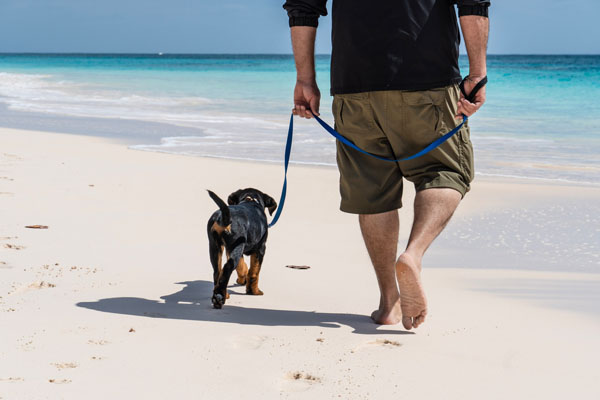
Trouble-Shooting Common Behaviors
Leash training is a slow process, requiring patience on your dog’s part – and yours. And even after you finish, you may encounter some misbehaviors you’ll want to correct. It doesn’t mean you did anything wrong. Nor does it mean you have a “bad dog.” You just need a little more work to correct the problem areas. If you remain calm, you’ll retain control over the situation. Getting angry will transmit itself through the leash and into your dog. And then you’ll both end up grounded in the backyard (which is fun for no one).
The Puller
Some dogs LOVE to pull. They see something insanely exciting (squirrels), and they have to charge after it. Yelling or hauling on the leash won’t do you any good. It WILL give you sore arms and shoulders. Using a no-pull harness is one way to help prevent this, but you can also easily correct the behavior with leash training.
- Brace your feet and STOP. You’re turning yourself into an immovable object.
- As soon as your dog turns to look at you, give your cue. (They’ll look to figure out why they can’t move)
- When the leash goes slack, hold a treat at your side. DON’T extend it to them – you want them to return to their proper position.
- Odds are, they’ll get the treat.
- You can then decide to walk and treat in the direction of the excitement. (Maybe it’s a friend) You’re letting them know, “It’s okay. I know you’re excited, but we have to walk calmly to get there.”
The Whirling Dervish
You’ve worked hard to establish which side you want your dog to walk on. But something caught their attention, and now they’re crossing back and forth and considering a full lap around you. You don’t want to risk getting tangled in a leash, and you definitely don’t want to encourage that kind of behavior. Yanking on the leash is NEVER the way to prevent this. Instead, you need to find your inner Zen and use good old leash training to fix the behavior.
- STOP. (Funny how that’s always step #1, isn’t it?) Shuffle your feet to remind your dog where YOU are.
- Give your cue and hold the treat on the correct side.
- You may need to repeat the cue several times to get your pup back into position. That’s okay. (Because you’re patient)
- If need be, gradually shorten the leash as your dog comes closer. (Still NOT pulling on it)
- Once they get the treat, offer plenty of praise.
- Walk-and-treat as before, perhaps with more of the slack in your opposite hand.
Some dogs drift behind you due to nerves. Our girl is TERRIFIED of smaller dogs (we have no idea why, especially since she has no problem with the cats). If she glimpses one on a walk, she tries to hide behind us. We have to shorten the leash, put a hand on her shoulder, and reassure her as we walk by. Take a look around to see what may be driving your dog’s behavior. It’s possible they’re frightened and trying to use you as a shield. You may need to offer extra encouragement and treats when you meet those encounters.
The Lunger
You know your dog and their triggers. If they’re not dog-friendly, dislike people on bicycles, or hate cats, you need to remain alert to your surroundings. Before THEY see that trigger and start to lunge, you need to provide a distraction. Cross to the other side of the street, change directions, or offer a treat or favorite toy. You want to break up the sightline as soon as possible. Remember, leash training is work for YOU, too. The two of you work as a pair. You shouldn’t take your eyes off the area, leaving your dog susceptible to potential problems. It’s much easier to turn away than it is to break your dog’s focus.
High Stepping
Maybe you live in an area without concrete leash laws. It still provides a layer of safety to leash train your dog. You’ll know they’ll remain at your side at all times, despite distractions, noise, or the presence of strangers. There’s no way to describe the relief that brings. And if you happen to move to a different region, need to make a trip, or hit the vet, you’ll have peace of mind. Your dog will walk nicely as you please – gaining admiring glances from everyone around you.
Who knows – they may even ask if you have a show dog!

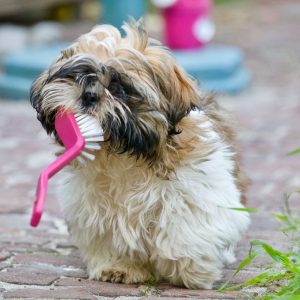
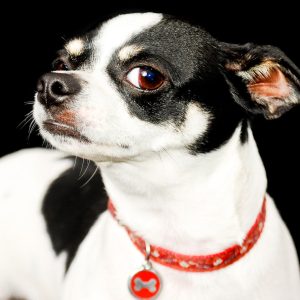



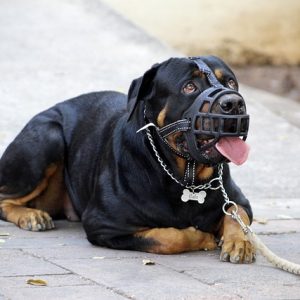



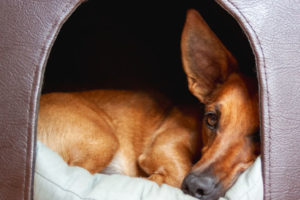

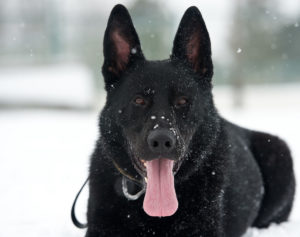
No comment yet, add your voice below!